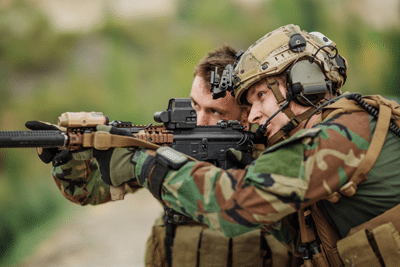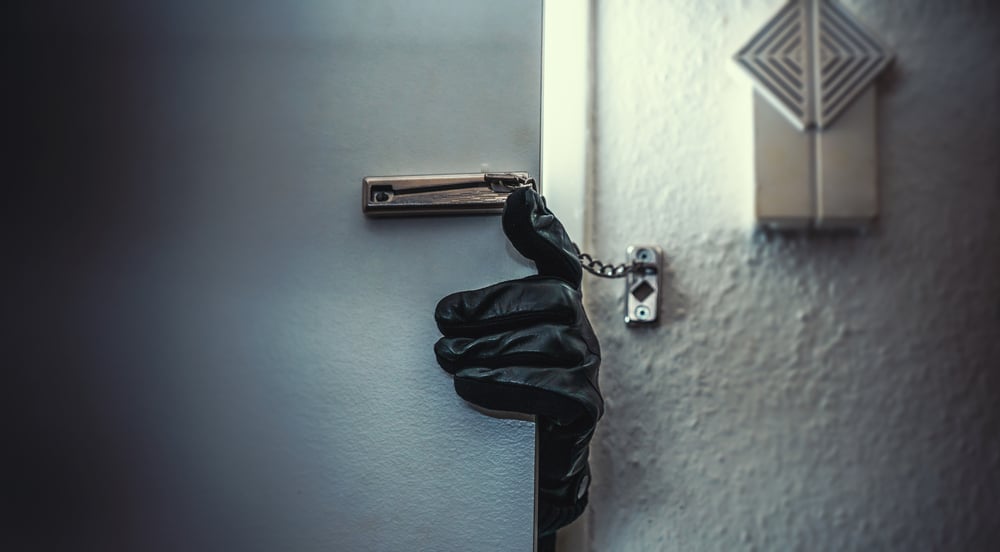For decades, civilian firearms fans have bought up military-style weapons, accessories, and optics. You may wonder what scope does the military use?
It is a near guarantee that weapons based on the current military weapons will be extremely popular. The case in point is obviously the AR-15, which has achieved firearms celebrity status as a result of being closely related to the military M4.
What Scope Does the Military Use
However, what scope does the military use? What optics do they prefer? Are they commercially available?
This is a pretty broad question. The military uses quite a few different optics, and different units often use different optics. Special operations units can use separate optics than conventional forces. However, in this article, we will talk about a few of the optics used in the military, and whether or not you can buy them.
1. M68 Close Combat Optic (CCO)
First up is the M68 CCO, which is extremely commonly used in the Army. The Army has a contract with the manufacturer, and they have literally hundreds of thousands of M68s. However, the sight is used throughout most branches of the military.
On the civilian side, it is available as the Aimpoint CompM4. It is a durable and reliable sight that is extremely easy to use. They are accurate and enjoyable to shoot with.
However, not everyone in the military uses M68s. Many people prefer to shoot with other sights,
2. EOTech 553
One example is the EOTech Model 553. These EOTech sights are a very specific kind of red dot sight. They are actually a holographic sight. What this means is that the reticle is actually a hologram that is illuminated by a laser. This allows for the reticle to be smaller, which increases your accuracy.
In the civilian market, these are priced very similarly to the Aimpoint CompM4. It is another great sight, but the battery life isn’t as good. However, it is also worth mentioning that EOTech was involved in a lawsuit brought forth by the military that the sights were defective, so it may be worth checking out some of the others on our list.
3. Advanced Combat Optical Gunsight (ACOG)
ACOG sights were originally mainly used by special operations units, but they are becoming more common in conventional units throughout the Army and Marine Corps. They are extremely popular and are my personal choice for weapons optics.
Fortunately for you, Trijicon ACOG sights are widely available on the civilian market! The military uses mostly a few 4×32 versions, the TA31RCO-A4CP, TA31RCO-M150CP, and TA31RC-M4CP. Another one that is used is the ACOG/RMR combo, which is an excellent sight.
However, there are quite a few different magnification options available, so be sure to check out all of them!
My favorite thing about Trijicon ACOG sights, other than the durability, is the fact that they use fiber optics for the red dot, so you never need a battery. I find them to be extremely accurate and easy to shoot, but they are very expensive.
4. Leupold Mark 4
Now, we are transitioning away from M4 sights and onto sniper sights. These are just 2 of the common ones, but it is generally dependent on the shooter. When you get into the most advanced shooters in the military, they often choose their own optics, and there isn’t necessarily much overlap from one sniper to the next.
But, the first common optics for snipers is the Leupold Mark 4, which is available on the civilian market as well.
It is available with a pretty wide variety of magnification ranges. Leupold has come to be synonymous with quality. The Mark 4 is absolutely no different. They are crystal clear and extremely accurate. However, a hefty price tag also comes with the Leupold name.
5. Schmidt & Bender PMII
Another one that is commonly used by military snipers is the Schmidt & Bender PMII. Just like the Leupold, there’s a huge variety of magnification ranges available. They are extremely high quality and are even more expensively priced than the Leupold.
These optics should be saved for the most advanced shooters out there. It is of the highest quality, but you will pay for it.
Conclusion
As you can see, there are quite a few different optics that the military uses. As a reminder, this list was just a beginning. There are a few different optics used on machine guns and grenade launchers, which would make this list even longer.
Another thing to consider is that the answer may be changing from day to day. Especially for special operations units, they often change optics frequently and are using the best and newest stuff available.

